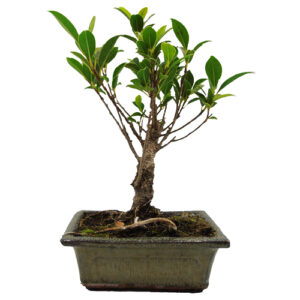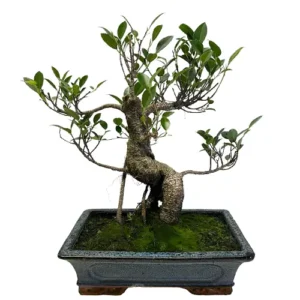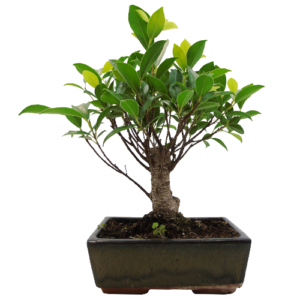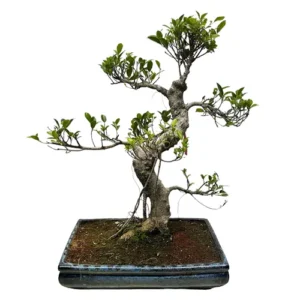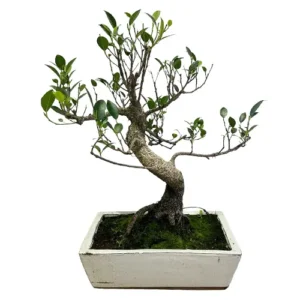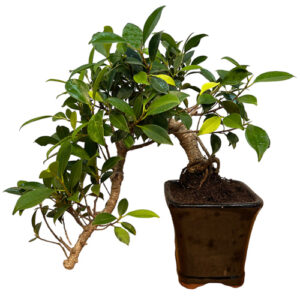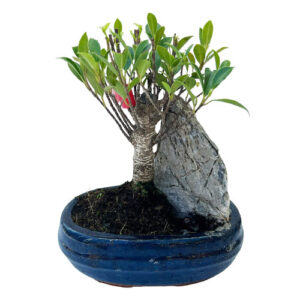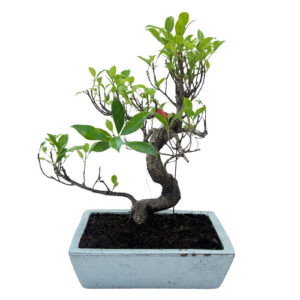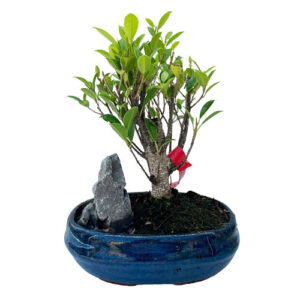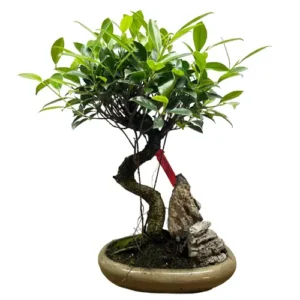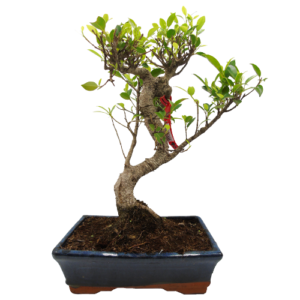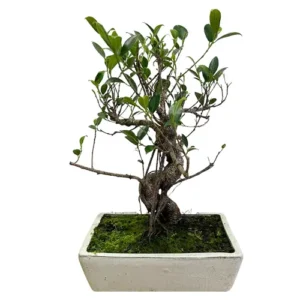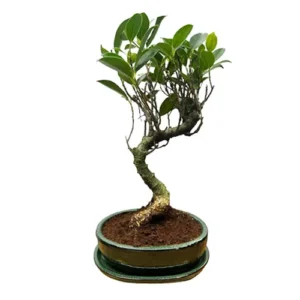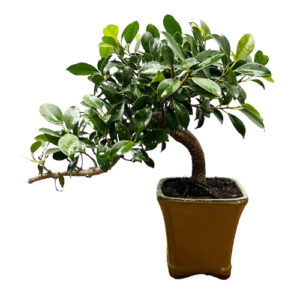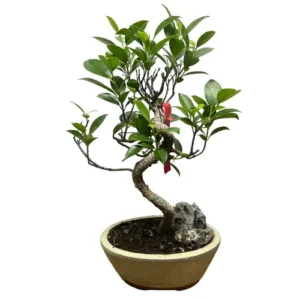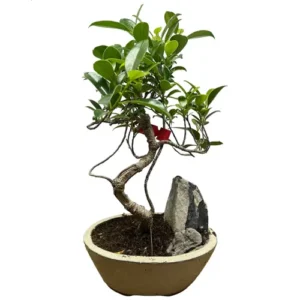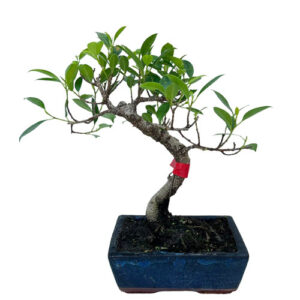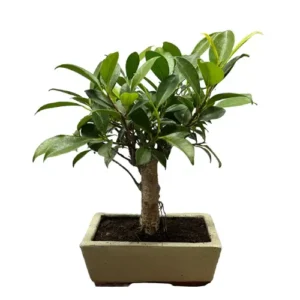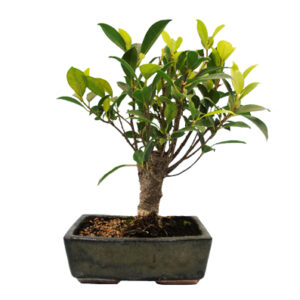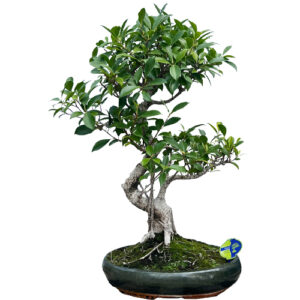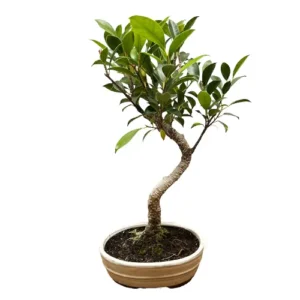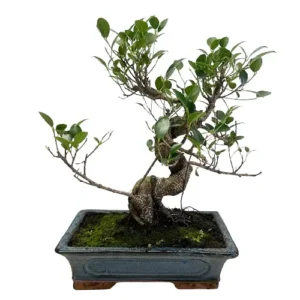Ficus Benghalensis
Indian Banyan Bonsai
The ficus is the most popular bonsai for beginners, and the genus can be found in most tropical climates around the world, making it the perfect indoor variety. Large and hefty leaves make the Indian Banyan stand out among its bonsai peers. Its powerful rugged and multiple trunks complement this eye-catching display.
Indian Banyan Bonsai Care Tips
Placement
The ideal placement of an Indian Banyan bonsai is near a bright window sill. They do not prosper with periods of direct sun or low light but love bright indirect light.
Watering
Like any of its Ficus counterparts, Indian Banyan should not be overwatered. Water once every three to four days during the summer. Make sure the soil is dry before every next watering, this aids the plant’s growth considerably.
Feeding & Fertilizing
During the growing season, apply a week’s feed once or twice across the month. Liquid feed of both mineral and organic material alternately is advised.
Pruning & Wiring
Trim new shoots and pinch out growing tips during the growing season to keep the plant’s shape. Prune back to just two or three leaves. Do not be concerned about sap as it will stop exuding naturally.
Wiring can take place across the year at any time. We recommend using wires with a thickness that matches the thickness of the branch: if the wire you choose is too thick you will damage the bark. If it is too thin, it won’t be effective.
Repotting
Repotting your tree is an important way to provide a fresh and suitable soil mix and ensure appropriate root health. Indian Banyan can be repotted anytime across the calendar year but Spring is the ideal time. Repot only every two to three years.
Trees that are ready for repotting will require root pruning, a suitable new pot and appropriate soil mix.
When repotting, do not cut back the root mass by a large amount, and choose a well-draining soil mix that has a neutral or slightly higher PH value of 5-6 but not over 7. We tend to use a mixture of different speciality bonsai soils on our trees. Every species is different so please contact us for free soil-mix advice or to take advantage of our repotting service.
Bonsai make for a one-of-a-kind indoor plant offering elegance, nature and art all in one minute form. Across an array of exquisite and erudite species, they all demand their own specific care and cultivation needs in order for their beauty to flourish. We have an extensive library of care guides for indoor bonsai trees so you can make an informed and considered choice. It’s not about selecting the perfect bonsai, it’s about selecting the perfect bonsai for you.
Indian Banyan Bonsai - Typical Queries
Can I keep an Indian Banyan bonsai tree outdoors?
An Indian Banyan bonsai should only be grown outdoors in considerably warmer climates than the UK. This species likes humidity and does not like cold draughts.
Is an Indian Banyan bonsai a challenging tree to care for?
This is a relatively easy species to care for that adapts to its environment well. The majority of bonsai are more difficult to care for than Indian Banyan.
Does Indian Banyan Bonsai get pests and diseases?
Indian Banyan’s most common pest is scale. Aphids, mites and mealybugs are also possible for this species. Avoid using insecticides that contain malathion. Watering is key to avoiding disease, it is easily onset with excessive dryness or dampness. Brown, white or black spots on your banyan tree leaves mean it is suffering from fungal disease. Remove infected leaves the moment this is sighted. Separate the bonsai from any other trees nearby to stem the spread of diseases.


